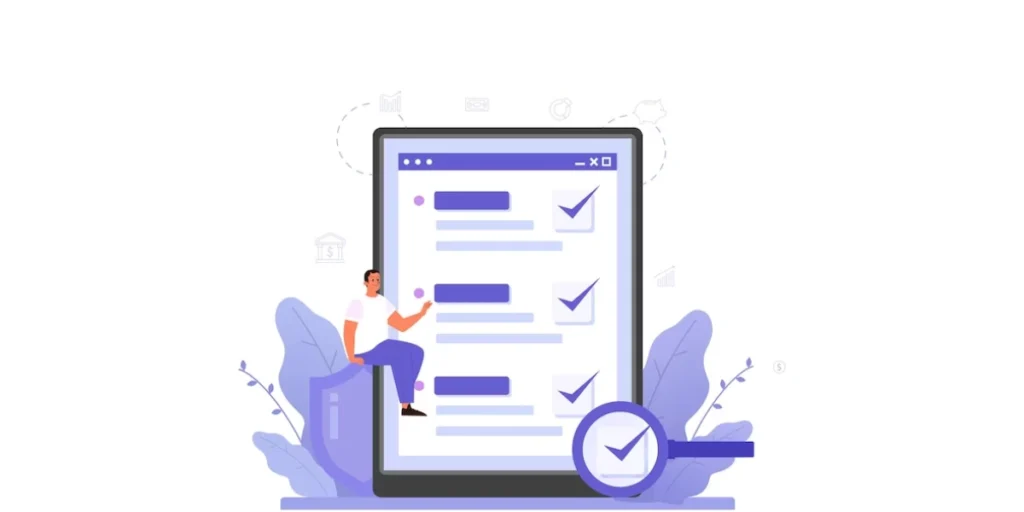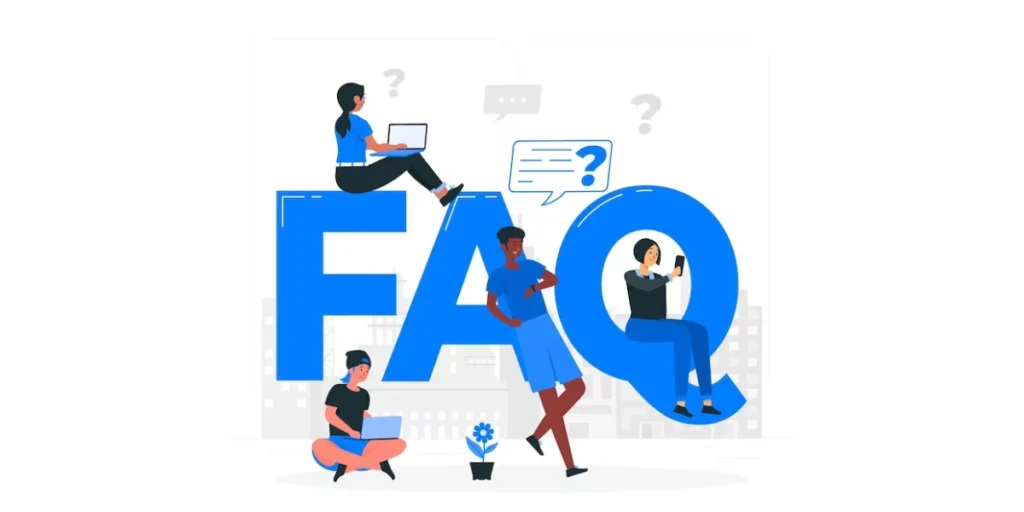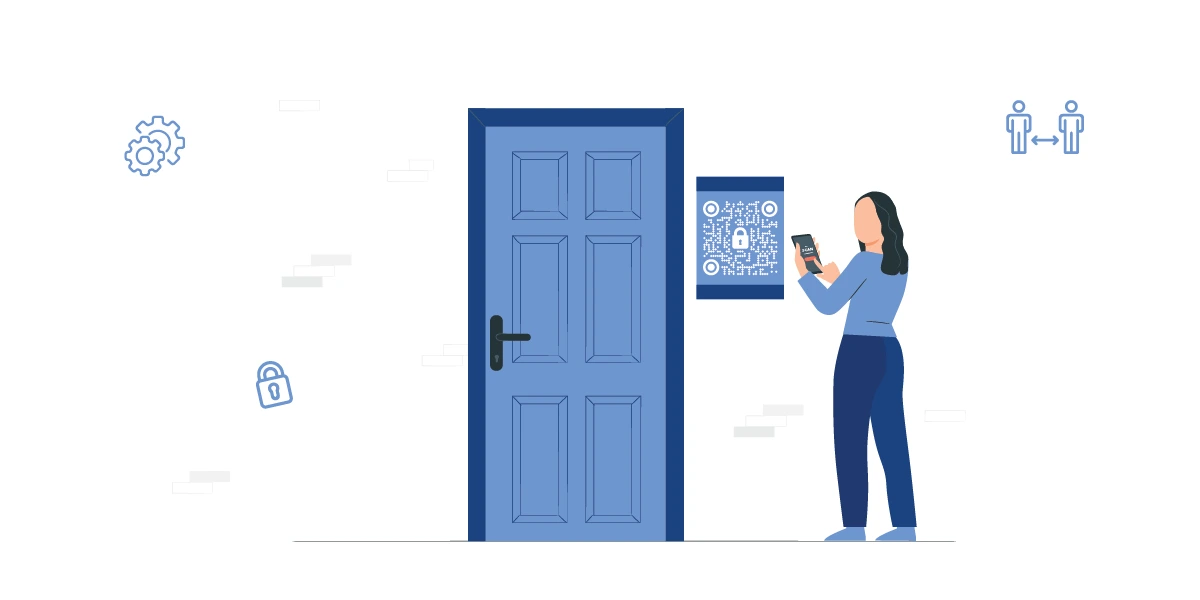In the age of smart homes, traditional doorbells have evolved into sophisticated devices. They are now capable of enhancing both security and convenience. One such innovation gaining popularity is the doorbell QR Code.
These unique codes offer homeowners an array of benefits. Some of which are:
- Quick and easy visitor identification
- Enhanced security features
In this blog, we will explore the world of doorbell QR Codes, their functionality, and how they are revolutionizing how we interact with our front doors.
A. What are doorbell QR Codes
Doorbell QR Codes combine the convenience of traditional doorbells with the versatility of QR Codes.
They are digital codes that can be scanned using a smartphone or a QR Code reader. Their focus is to provide access or information related to a doorbell system.
Users should approach the door equipped with a doorbell QR Code. They can then capture the code using their smartphone’s camera or a QR Code scanning app.
Once scanned, the QR Code triggers a specific action or provides relevant information to the user.
B. Applications of doorbell QR Code

Doorbell QR Codes have a range of applications that offer convenience and enhanced functionality. Some of the common applications include:
1. Visitor management
Doorbell QR Codes are widely used in residential buildings, gated communities, and apartments.
Each resident is assigned a unique QR Code that visitors can scan. This notifies the resident of their arrival and gain access to the premises.
This improves security and streamlines the check-in process.
2. Commercial settings
In hotels, office buildings, or coworking spaces, QR Codes can be generated for each room, office, or workspace.
Scanning the QR Code allows visitors or employees to notify the occupant. It could be their arrival or gain of access.
This eliminates the need for physical keys or access cards.
3. Information dissemination
Doorbell QR Codes can be linked to websites, product pages, or promotional materials.
This enables visitors to access additional information directly from their smartphones.
For example, QR Codes placed next to real estate listings can provide virtual tours.
4. Delivery and package tracking
QR Codes can be used for secure delivery and package tracking systems.
Delivery personnel can scan the QR Code at the recipient’s door to confirm the delivery.
This will ensure accurate tracking and reduce the risk of package mishandling.
5. Emergency assistance
QR Codes can be utilized in emergency situations.
For instance, in hotels or public buildings, QR Codes can be placed near fire alarms.
They can provide immediate access to evacuation plans or emergency contact information.
6. Access control
QR Codes can serve as temporary or one-time access credentials.
For example, in events or conferences, attendees can receive QR Codes.
These could then grant them access to specific areas or sessions.
Additionally, it will enhance security and reduce the need for physical tickets or badges.
7. Smart home integration
Doorbell QR Codes can be integrated with smart home systems.
Users can remotely monitor and control their doorbell functions via smartphone apps.
This includes receiving notifications, video feeds, and interacting with visitors from anywhere.
These are just a few examples of the diverse applications of doorbell QR Codes.
As technology evolves, new and innovative uses are likely to emerge.
It will expand the functionality and convenience of QR code-based doorbell systems.
Generate a QR Code For Your Unique Case
START TODAY!
C. Benefits of Doorbell QR Codes

Doorbell QR Codes can offer several benefits for homeowners, visitors, and delivery personnel. Here are some advantages:
1. Quick and Convenient Access
QR Codes on doorbells allow visitors to quickly access information or perform actions.
This is possible just by scanning the QR Code with their smartphones.
Users can save time and effort compared to manual entry or searching for contact details.
2. Enhanced Security
QR Codes can be personalized for each visitor or service provider.
By using a unique QR Code homeowners can track who has accessed their property.
This allows for better security monitoring and accountability.
3. Contactless Interactions
QR Codes provide a way for visitors to communicate with homeowners without physical contact.
This can be particularly useful during times of social distancing.
It is also helpful when contact is not desired or permitted.
4. Delivery Management
Doorbell QR Codes can be used to facilitate package deliveries.
Delivery personnel can scan the QR Code to notify the homeowner of their arrival.
Additionally, they can provide delivery updates, or request specific instructions.
This reduces the risk of missed deliveries or package theft.
5. Customizable Actions
QR Codes can be programmed to trigger specific actions when scanned.
For example, scanning a doorbell QR Code might automatically open an app.
Also, it could provide directions to a designated drop-off location.
Another use could be to connect the visitor directly to the homeowner via video call.
6. Improved Accessibility
Doorbell QR Codes can be beneficial for individuals with disabilities or limited mobility.
By using QR Codes, people can easily access important information or initiate actions.
This wouldn’t require physical interaction or the need for manual input.
7. Time-Sensitive Information
Homeowners can update the content linked to the QR Code.
This allows them to provide time-sensitive information such as temporary access codes.
It could also be specific instructions or alerts about ongoing maintenance or repairs.
8. Visitor Tracking and Analytics
QR Codes can be integrated with tracking systems to gather data on visitor traffic.
Other information could include popular visiting hours and the success of marketing campaigns.
This information can help homeowners better understand and optimize their property.
Note that implementing doorbell QR Codes requires appropriate security measures.
This is important to safeguard the privacy and integrity of the system.
D. Customizing Doorbell QR Codes: Design and Functionality

You have the flexibility to design doorbell QR Codes to match your preferences.
Here are some considerations in terms of design and functionality:
Design:
1. Branding
You can include your personal or business logo on the QR Code.
This will maintain brand consistency and make it easily recognizable.
2. Aesthetics
Choose colors, patterns, or background images that align with your aesthetics.
This can make the QR Code more visually appealing and blend seamlessly.
3. Size and Placement
Ensure that the QR Code is large enough to be easily scanned, even from a distance.
Consider its placement on or near the doorbell.
Ensure that it is clearly visible and accessible for visitors.
Functionality:
1. Contact Information
Include your contact details, such as phone number, email address, or website.
This allows visitors to easily reach out to you without manually entering the information.
2. Video Call Integration
You can customize the QR Code to initiate a video call when scanned.
This enables real-time communication with visitors before granting access.
3. Temporary Access Codes
Generate QR Codes that provide temporary access to your property for a specific time.
This can be useful for granting access to guests, service providers, or deliveries.
This won’t require the need for physical keys or codes.
4. Additional Information
Link the QR Code to additional information or instructions, such as:
- Parking details
- Entry Protocols
- Wi-Fi access, or
- Emergency procedures
This ensures visitors have all the necessary information at their fingertips.
5. Smart Home Integration
If you have a smart home automation system, customize the QR Code to trigger specific actions.
For example, it could activate or deactivate security systems, adjust lighting, or unlock smart locks.
6. Language Selection
If you have multilingual visitors or tenants, provide language options within the QR Code.
Scanning the code could prompt the user to select their preferred language.
This will ensure they receive instructions or information in their desired language.
7. Analytics and Tracking
Implement QR Codes that capture data on visitor traffic, such as the number of scans, visiting hours, or frequency.
This can help you analyze and optimize your property usage or services.
Remember to prioritize security when customizing QR Codes.
Ensure that any personal or sensitive information is transmitted securely.
Consider implementing security measures to protect the integrity of the QR Code system.
Generate a QR Code For Your Unique Case
START TODAY!
E. Troubleshooting common issues with Dorbell QR Codes

While doorbell QR Codes can be useful, some common issues may arise.
Here are a few troubleshooting steps for addressing these issues:
1. Scanning Problems
– Ensure the QR Code is printed or displayed clearly and at an appropriate size
– Make sure it is not damaged or distorted, which can hinder scanning
– Check the lighting conditions
Poor lighting or glare can make it difficult for scanners to read the QR Code. Adjust the lighting or try scanning from a different angle.
– Ensure the scanner app or device you’re using is compatible with QR Codes
Try using a different scanning app or device to see if the issue persists.
– Clean the camera lens of your scanning device. Smudges or dirt may affect its ability to read the QR Code accurately
2. Connectivity Issues
– Ensure that you have a stable internet connection
Weak or no internet connectivity can prevent the QR Code from functioning as intended.
– Check if the website or online resource linked to the QR Code is working properly
If there are issues with the website, it may affect the functionality of the QR Code.
3. Outdated or Invalid QR Codes
– Make sure that the QR Code you’re scanning is current and hasn’t expired
Temporary access codes or time-sensitive information may have an expiration date
– Verify that the QR Code hasn’t been revoked or deactivated
If the administrator has deactivated the QR Code, it will not provide access.
4. Security and Privacy Concerns
– You might experience security or privacy concerns related to the QR Code
In that case, contact the homeowner or system administrator to address the issue.
They may need to update security measures or investigate potential vulnerabilities.
5. User Error
– Double-check that you’re scanning correctly and using a compatible scanning app or device
Make sure you’re positioning the QR Code within the scanning area. Also, follow any instructions provided.
F. Exploring future possibilities: Doorbell QR Codes and beyond

As technology continues to advance, there are several exciting future possibilities for doorbell QR codes and beyond. Here are a few potential developments:
1. Biometric Integration
Doorbell QR Codes could be combined with biometric authentication methods.
This would add an extra layer of security and convenience.
It will allow authorized individuals to gain access without the need to scan a QR Code.
2. Virtual Reality (VR) and Augmented Reality (AR) Integration
Doorbell QR Codes could be enhanced with VR or AR capabilities.
For example, scanning a QR Code could trigger a virtual tour of the property. It could also provide augmented information about the surroundings.
3. Internet of Things (IoT) Integration
With the rise of IoT devices, doorbell QR Codes could be integrated with other smart home devices and systems. enhancing security features in a smart home such as a motion sensor alarm.
It could automatically adjust the lighting, temperature, or music preferences. This could be based on the visitor’s preferences or the homeowner’s settings.
4. Voice Interaction
Voice assistants Alexa or Google Assistant could be integrated with doorbell QR Codes.
This will allow visitors to communicate with the system using voice commands. Also, it would provide a hands-free and convenient experience.
5. Blockchain Technology
Blockchain technology could enhance the security and privacy aspects.
By leveraging blockchain, access records, and permissions could be securely stored.
They could be verified, providing a transparent and tamper-resistant system.
6. Delivery and Package Management
QR Codes could play a significant role in optimizing delivery processes.
For example, it could provide delivery personnel with real-time instructions.
This could be on where to leave packages securely, reducing the risk of theft or damage.
7. Personalized Experiences
Doorbell QR Codes could deliver personalized experiences based on visitor profiles.
You could personalize greetings, preferences, and recommendations to enhance the visitor’s experience.
8. Environmental and Sustainability Features
QR Codes on doorbells could provide information and encourage eco-friendly practices.
For instance, scanning the code could display tips on energy conservation.
As technology evolves, expect more innovative uses for doorbell QR Codes and their integration with emerging technologies.
G. FAQs

1. What is a doorbell QR Code?
Doorbell QR Codes merge the convenience of traditional doorbells with the versatility of QR Codes.
They are digital codes scannable using smartphones or QR Code readers. Their purpose is to facilitate access and provide doorbell-related information.
2. How does a doorbell QR Code work?
Doorbell QR Codes work by using a special code that can be scanned with a smartphone or QR Code reader.
When a visitor scans the QR Code, it triggers an action or provides information.
This can include granting access, displaying contact details, or initiating a video call.
It’s a convenient way to interact with the doorbell system using a simple scan with a smartphone.
3. Do I need an internet connection to use doorbell QR Codes?
Yes, you will need an internet connection.
4. Can multiple people access the same doorbell QR Code?
Yes, multiple people can easily access the same doorbell QR Code.
5. What happens if my smartphone doesn’t have a QR Code reader?
If your smartphone doesn’t have a QR Code reader, you could use a Google Lens QR Code reader for the same. You won’t have to download any additional apps.
Generate a QR Code For Your Unique Case
START TODAY!
Summing Up
In conclusion, doorbell QR Codes have emerged as a smart and efficient solution.
By combining the simplicity of QR Code scanning with the power of digital technology, they offer a range of benefits.
If you’re still reading, you’ve already learned everything about Doorbell QR Codes. If you have any questions, let us know in the comments.
